第19章 Flowers(3)
When a tea-master has arranged a flower to his satisfaction he will place it on the tokonoma, the place of honour in a Japanese room.Nothing else will be placed near it which might interfere with its effect, not even a painting, unless there be some special aesthetic reason for the combination.It rests there like an enthroned prince, and the guests or disciples on entering the room will salute it with a profound bow before making their addresses to the host.Drawings from masterpieces are made and published for the edification of amateurs.The amount of literature on the subject is quite voluminous.When the flower fades, the master tenderly consigns it to the river or carefully buries it in the ground.Monuments are sometimes erected to their memory.
The birth of the Art of Flower Arrangement seems to be simultaneous with that of Teaism in the fifteenth century.
Our legends ascribe the first flower arrangement to those early Buddhist saints who gathered the flowers strewn by the storm and, in their infinite solicitude for all living things, placed them in vessels of water.It is said that Soami, the great painter and connoisseur of the court of Ashikaga-Yoshimasa, was one of the earliest adepts at it.Juko, the tea-master, was one of his pupils, as was also Senno, the founder of the house of Ikenobo, a family as illustrious in the annals of flowers as was that of the Kanos in painting.
With the perfecting of the tea-ritual under Rikiu, in the latter part of the sixteenth century, flower arrangement also attains its full growth.Rikiu and his successors, the celebrated Ota-wuraka, Furuka-Oribe, Koyetsu, Kobori-Enshiu, Katagiri-Sekishiu, vied with each other in forming new combinations.
We must remember, however, that the flower-worship of the tea-masters formed only a part of their aesthetic ritual, and was not a distinct religion by itself.A flower arrangement, like the other works of art in the tea-room, was subordinated to the total scheme of decoration.Thus Sekishiu ordained that white plum blossoms should not be made use of when snow lay in the garden."Noisy" flowers were relentlessly banished from the tea-room.A flower arrangement by a tea-master loses its significance if removed from the place for which it was originally intended, for its lines and proportions have been specially worked out with a view to its surroundings.
The adoration of the flower for its own sake begins with the rise of "Flower-Masters," toward the middle of the seventeenth century.It now becomes independent of the tea-room and knows no law save that the vase imposes on it.New conceptions and methods of execution now become possible, and many were the principles and schools resulting therefrom.A writer in the middle of the last century said he could count over one hundred different schools of flower arrangement.Broadly speaking, these divide themselves into two main branches, the Formalistic and the Naturalesque.The Formalistic schools, led by the Ikenobos, aimed at a classic idealism corresponding to that of the Kano-academicians.We possess records of arrangements by the early masters of the school which almost reproduce the flower paintings of Sansetsu and Tsunenobu.The Naturalesque school, on the other hand, accepted nature as its model, only imposing such modifications of form as conduced to the expression of artistic unity.Thus we recognise in its works the same impulses which formed the Ukiyoe and Shijo schools of painting.